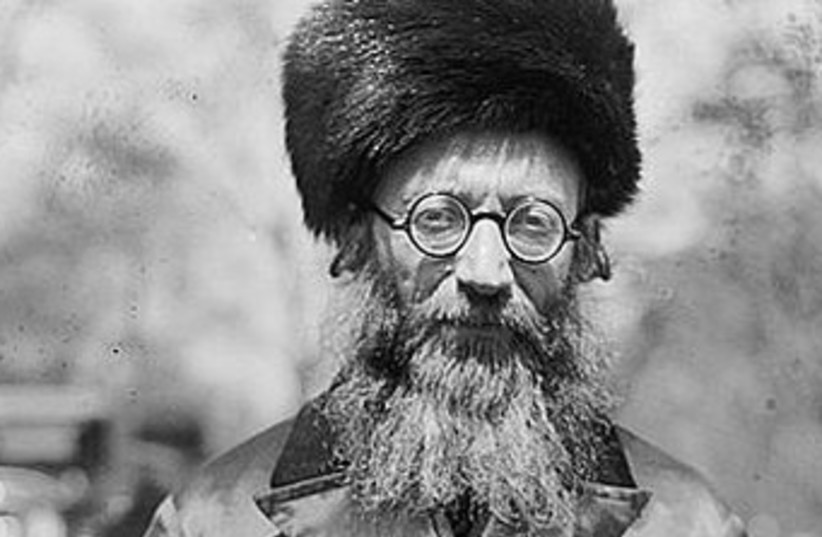My neighbor caught Rav Kook’s name on the jacket of the book I was reading in shul (when I should have been davening) and got very excited. He had just encountered some of Rav Kook’s teachings for the first time and was smitten. He asked whether I would recommend the book. I wasn’t sure what to tell him.
On the one hand, it was a magnificent, exciting and even breathtaking volume. On the other hand, I was struggling with it. The book assumes an extremely high level of familiarity with a very wide range of disciplines. It is not the first or second book about Rav Kook that I would recommend (though Yehudah Mirsky’s previous volume on Rav Kook from the Jewish Lives series is a great introduction). And yet, it is precisely what makes this book such a challenging read, that also makes it so gripping and compelling.
Mirsky’s Towards the Mystical Experience of Modernity: The Making of Rav Kook 1865-1904 is an attempt to trace the intellectual development of one of the 20th century’s most unique and innovative thinkers from his youth until his rise to major prominence with his aliyah in 1904.
As the title of the book hints, perhaps Rabbi Abraham Isaac Hakohen Kook’s most outstanding achievement was his mystical interpretation of the secularizing, humanistic and nationalistic trends of the late 19th and early 20th centuries.
Much of the Orthodox establishment looked upon these features of modernity with horror. On the other end of the spectrum, reformers and maskilim demanded a reevaluation of Jewish tradition by the light of these trends. While rejecting Reform and secularization, Rav Kook nonetheless embraced large swaths of the modern ethos by rereading it through the light of Kabbalistic notions of God’s immanence pulsing through human history.
How did Rav Kook arrive at such a unique approach to modernity? What were the building blocks that he used to erect his intellectual edifice? Where did Rav Kook find the wherewithal to blaze his own individual trail that deviated so distinctively from the well-worn paths of all those around him?
These are the questions that Mirsky seeks to answer, and there is perhaps no one as well equipped to answer them. He brings together a mastery of the sociology of modernity, the history of ideas, the development of the Kabbalah, 19th-century intellectual trends, medieval Jewish philosophy, the Lithuanian yeshiva culture and, of course, Rav Kook’s extensive published and unpublished writings.
Mirsky summons all these intellectual resources to get to the bottom of the mystery that is the emergence of Rav Kook.
This is what makes the book so exciting, but it also makes the book challenging for those who are not on Mirsky’s level.
At times, ideas and strands of thought are touched upon obliquely, presuming the reader does not require more. This is no doubt in part due to the book’s academic origins. It is a revision and expansion of Mirsky’s Harvard University doctoral dissertation. While he hopes “it will find readers outside the precincts of universities,” it seems that even one who is generally familiar with academic Jewish writing might find that the broad range of disciplines and subtle analyses in this volume push beyond the horizons of many other academic rabbinic biographies.
And yet, nonacademics willing to engage this work will discover a riveting story of the intellectual and emotional development of one of Jewish history’s most towering personalities.
MIRSKY INTRODUCES us to a confident, active, budding, young and mildly eccentric rabbinic genius of the Lithuanian Talmudic tradition who does not yet exhibit the radical characteristics that the mature Rav Kook will develop.
We see his first shift toward something different in the wake of the death of his first wife, Bat Sheva. She dies at 22, less than five years into their marriage. In the aftermath of this loss, Rav Kook turns inward.
This pronounced inwardness manifests itself in the cultivation of a lifelong habit of journal writing. Rav Kook’s journals are spiritual diaries that allow for a relatively uninhibited exploration of himself and the deeper meaning of Torah.
He comes to realize that while the Lithuanian Talmudic tradition that he was raised in emphasizes the legal portions of the tradition (Halacha), he is drawn to its narrative and theological expositions (Aggada). This blossoms into an appreciation for his own intuition, self-affirmation and emotion. This, in turn, grows into an openness to broad trends and ideas, ultimately leading to his conclusion that the heretical and revolutionary Zionist movement is an expression of the Divine will in history.
Mirsky weaves this personal narrative into the context of the history of Kabbalah, the polemics of the Musar movement, the thought of Rousseau, Nietzsche and Hegel, theories of modernity, and much more.
Mirsky’s twofold mapping of Rav Kook’s individual spiritual-intellectual journey and its place in the broader cultural backdrop shines an intense light on the first half of Rav Kook’s life.
For “readers outside the precincts of universities” who are up to the challenge, this book comes highly recommended.
Towards the Mystical Experience of Modernity by Yehudah MirskyAcademic Studies Press410 pages; $33.56

